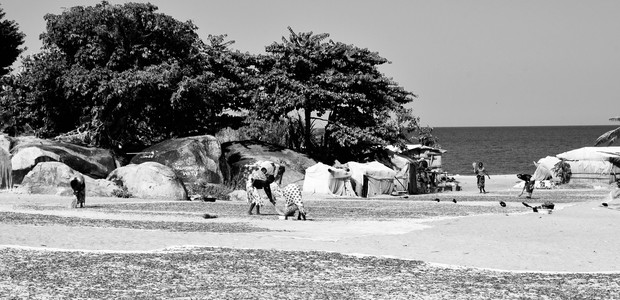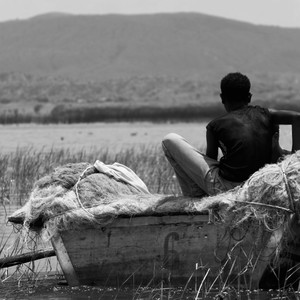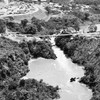Balancing development and conservationHow can we best protect Lake Victoria’s ecosystem?

The Niles: In 2010 the UN General Assembly recognised the human right to water and sanitation and acknowledged that clean drinking water is essential to the realisation of all human rights. Experts say that to secure clean drinking water and other water uses in the future; we need to ensure that the freshwater ecosystems remain healthy. What is the current situation?
Isack Kamwelwe: The conserved and healthy freshwater ecosystem is a pillar for water resources utilisation and for meeting current and future water demands including human water supply. This includes controlling and managing water pollution from point and non-point sources; and limiting abstractions to sustainable levels such that the amount of water left in lakes, rivers and other sources is sufficient to maintain aquatic ecosystems. For example, the current situation in Lake Victoria is satisfactory, and there are tremendous efforts and commitments to conserving the lake. The conservation is implemented by the Lake Victoria Basin Water Board, the Lake Victoria Environmental Management Programme (LVEMP), and the Lake Victoria Water and Sanitation Project (LVWATSAN) among others. Water from Lake Victoria is fit for human use after average processing.
TN: Can you describe the trends in freshwater ecosystem management in Tanzania?
IK: The management of the freshwater ecosystem is carried out in a decentralised system that combines bottom-up and top-down approaches. The managing institutions begin with the Water Users Association at the level of a water source to sub-catchment, catchment and basins. These are linked to the national level through the National Water Board and the Water Resources Division of the Ministry. The institutional set-up from the national to water users level was designed to implement the Integrated Water Resources Management approach, one of whose principles is that the environmental integrity that sustains the freshwater ecosystem should be maintained through the allocation of a fair share of water for the environment. So far, the country has developed Integrated Water Resources Management and Development (IWRMD) plans in six out of nine basins.
TN: Throughout history, most of the pressure placed on freshwater ecosystems has been attributed to human activities. How can you ensure that the existing and ongoing development of water infrastructure does not disrupt the ecosystems?
IK: The Ministry of Water and Irrigation, in collaboration with Basin Water Boards based in the field, are balancing the management and development of water resources. Major water use includes irrigation and domestic use. To conserve ecosystems, all abstractions from a water source are balanced with environmental water requirements at a specific area before being issued a water use permit. The protection of the ecosystems is clearly stipulated in the Water Resources Management Act No. 11 of 2009 Section 6 (2) (b) where the share of environment termed as an environmental reserve (requirement) is stated. Similarly, through the Environmental Management Act No. 20 of 2004, major projects are subjected to an Environmental Impact Assessment (EIA) study that aims to safeguard the environment.
TN: What are the most common threats to fresh-water ecosystems in the country?
IK: There is an increasing encroachment of water sources through agricultural expansion, including livestock keeping and other economic activities. The encroachment is associated with deforestation and subsequent sedimentation. Likewise, pollution through wastewater from settlements and industries, as well as from mining (small and large scale) activities is gradually becoming a threat to freshwater ecosystems.
TN: The loss and degradation of habitat, in particular from sedimentation due to deforestation and eutrophication, and the introduction of alien species, are posing major threats. How is the government addressing this situation?
There are tremendous efforts and commitments to conserving the lake.”
IK: Specifically, in the Lake Victoria Basin, the government, via the Lake Victoria Basin Water Board (LVBWB) and Lake Victoria Environmental Management Programme Phase II (LVEMP), has been working on the same issues through the control and prevention of point source pollution and watershed management. For example, through LVEMP II, three urban pollution hotspots have been addressed (sludge disposal facility, abattoir & artificial wetland and connection of households to sewage-line), and there are 24 water hyacinths hotspots with active monitoring and control activities. The management of upper catchments to check sedimentation is also conducted through community-based interventions (CDDs). The interventions include sustainable land management activities in the areas of afforestation/reforestation, conservation agriculture, protection of the buffer zones and land use planning.
TN: When it comes to Lake Victoria, can you explain how member states can sustainably promote the lake’s ecosystem?
IK: The Lake Victoria Partner States enjoy close historical, commercial, industrial, cultural and other ties. This has led to increased investment in areas of social and economic endeavour to spur development and eradicate poverty around the Lake Victoria Basin. To do this, the member states designated the Lake Victoria Basin as an economic growth zone and agreed to establish a body for the joint management of Lake Victoria called the Lake Victoria Basin Commission (LVBC) with its headquarters at Kisumu, Kenya. The Commission is to take all appropriate measures, individually or jointly, and where appropriate with the participation of all stakeholders to protect, conserve and rehabilitate the basin and its ecosystems. Member states, via the LVBC, promote the management and conservation of the lake ecosystems through the improvement of the collaborative management of the trans-boundary natural resources of the LVB. This includes the adoption of harmonised policies, legislation and regulatory frameworks for water and fisheries management. Likewise, the improvement of environmental management of targeted pollution hotspots and selected degraded sub-catchments.
TN: Is it true that the ongoing droughts are causing unprecedented stress to the Lake Victoria’s ecosystems and are pushing many native species to the brink of extinction?
IK: Lake Victoria is of major ecological significance because it supports a wide diversity of flora and fauna. It also plays a major economic role in the riparian countries, including supporting a large fishing industry for export and local consumption. The lake and its satellites are also important stores of fisheries resources both regarding diversity and numbers. Despite the richness of diversity and species, one of the problems facing the lake is unsustainable fishing that has had adverse impacts on fish species diversity and the stocks. However, it is thought that some endemic species especially haplochromine, which previously comprised about 90 percent of the fish biomass, had become extinct from the lake partly due to predation by the Nile perch introduced in the lake in the late 1950s and early 1960s and partly from unsustainable fishing, such as illegal fishing gears and methods, contributing to the dramatic loss of fish biodiversity. So far, there is no scientific evidence connecting the decline to the drought but rather the evidence points to typically exploited fisheries.
TN: Climate change and climatic variability have had an obvious impact on water resources, including reduced flow and erratic rainfall. How are you addressing the effects of climate change?
IK: The effects of climate change on ecosystems and water resources are mainstreamed in the basin’s Integrated Water Resources Management, and Development (IWRMD) plans to address catchment degradation and climate change impacts. Additionally, the Ministry works in collaboration with the Vice President’s Office (VPO) – Environment. The VPO has a National Climate Change Strategy dating back to 2012 from which the Ministry of Water and Irrigation has developed an action plan: Water Resources Management Strategic Intervention and Action Plan for Climate Change Adaptation, 2012.
TN: Biodiversity within inland water ecosystems in Tanzania is both highly diverse and of great regional importance to livelihoods and economies. However, development activities are not always compatible with the conservation of this diversity, and it is poorly represented in the development planning process. How do you assess the government’s performance?
Lake Victoria is of major ecological significance.”
IK: The Ministry takes the conservation of freshwater ecosystems very seriously. Hence, any development associated with water sources and resources is critically scrutinised. One way the government achieves this is by subjecting all the development projects to an environmental impact assessment according to environmental management law. The same always occurs in planning processes for the protection, conservation and management of environment and water sources.
TN: Freshwater ecosystems form a particularly important part of urban green spaces. What is the government’s strategy towards promoting such greenbelts?
IK: In the country, there are water sources with significant ecosystems both in urban and rural areas. Both are treated and managed similarly. The conservation of water sources such as rivers crossing urban centres and green environments is mainstreamed as part of the day-to day-functions of the Water Basins and other Ministry’s organisations.
TN: Do you have any advice for the people living near freshwater ecosystems?
IK: Water is a valuable but finite resource; hence it should be used wisely and efficiently. According to the Water Resources Management Act No. 11 of 2009 section (7): “Every person residing in Mainland Tanzania shall have a stake and a duty to safeguard and protect water resources and to inform the relevant authority of any activity and phenomenon that may affect the quantity and quality of the water resources significantly.” This should be the case for all people living near freshwaters. Likewise, polluted water is as good as no water. Hence everyone should make sure that water remains clean, as there is no alternative to water.





